China is vast, not just in geography but in the kinds of experiences it holds. There are dramatic landscapes, dense cities, historic towns, and everyday places where the past and present quietly overlap. Some travel moments are spectacular. Others are small and unexpected. Both can leave a mark.
This list brings together a handful of those moments. Some are well-known, some are quietly odd, and some sit somewhere in between. Each offers a different way of seeing the country, not through what is most famous, but through what lingers.
Also read: 13 Destinations to Visit in China in 2025
1. Time travel inside a 1980s-inspired indoor “town” at Wenheyou, Changsha
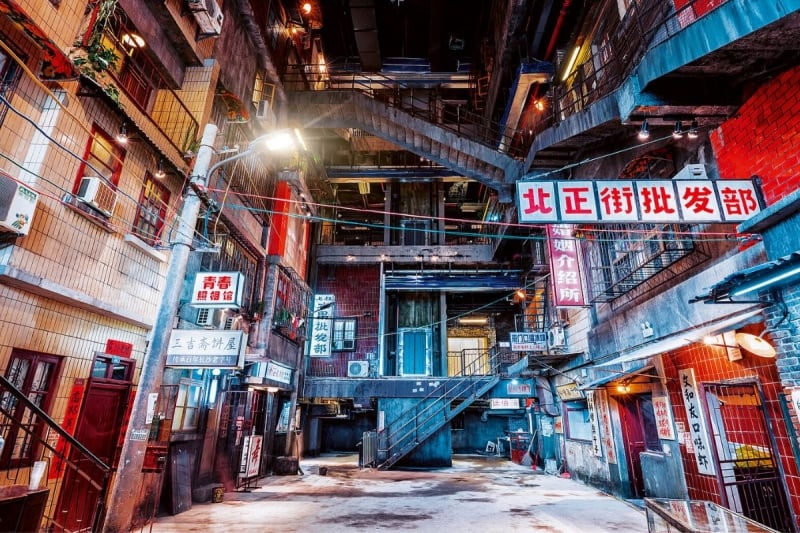
Image Credit: Red Dot Design Award Official Website
Tucked inside a shopping mall in Changsha, the Wenheyou Laochangsha Lobster Restaurant is more than just a place to eat. It is a fully immersive re-creation of a 1980s Chinese residential block, complete with crumbling staircases, faded signboards, and even “broken” air-conditioning units and exposed wiring. Every corner is carefully designed to reflect a past era, not just in how it looks but in how it feels.
Inside, you will find narrow alleys lined with traditional food stalls and community barbershops, video game rooms with CRT TVs, massage parlours, and fashion boutiques from a bygone era. Some shopfronts carry the names of real stores that once stood in Changsha. The layout mixes residential walkways with dining zones, so it feels like you are walking through someone’s neighbourhood during the dinner rush (but indoors and air-conditioned).
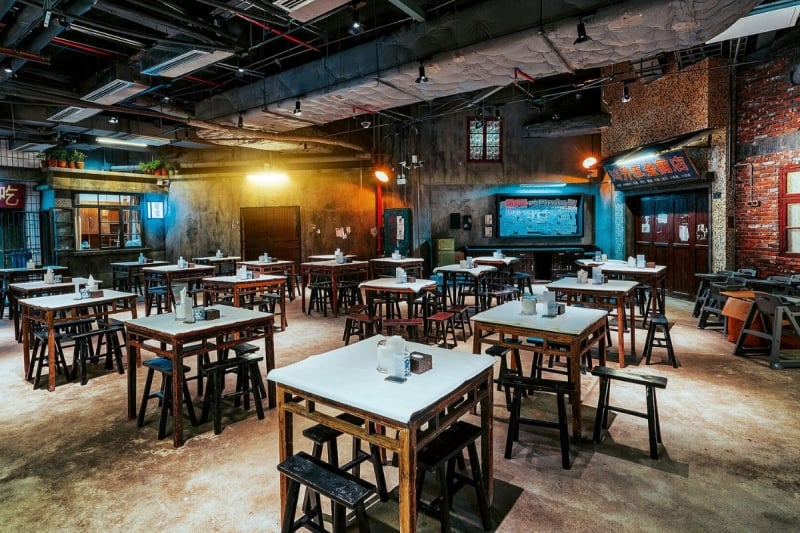
Image Credit: Red Dot Design Award Official Website
What makes Wenheyou special is not just the Instagram-friendly look. It creates an emotional space where older visitors relive memories and younger ones get to imagine life before the internet. It is part history lesson, part food haven, and part immersive art. Whether you are there for the city-famous crayfish or just to take it all in, Wenheyou offers something rare — a full-body trip into the past, served with a side of chilli oil.
2. Stay overnight at a 24-hour spa in Shenzhen
If you’re looking for a place to rest after a long travel day, consider a 24-hour spa like Tenz Tangquan Life in Shenzhen. For around S$120, you get access to a wide variety of facilities like hot spring baths, steam rooms, unlimited snacks and drinks, and a 90-minute massage, all under one roof.
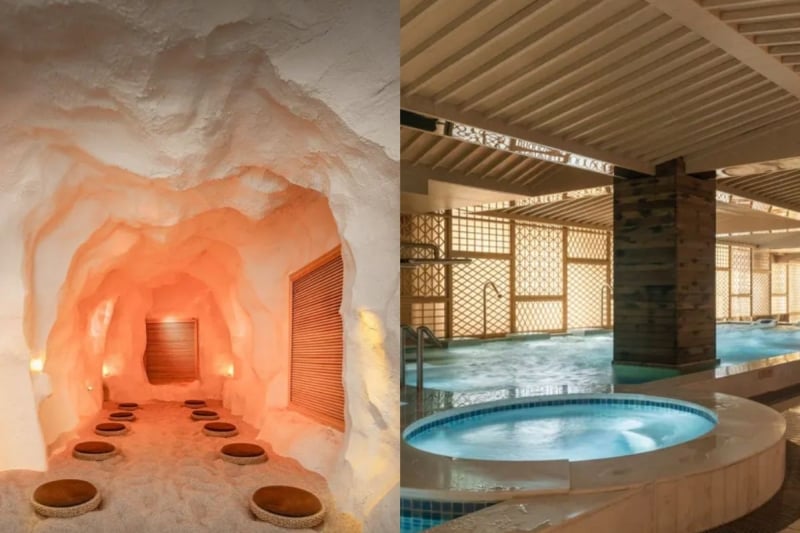
Image Credit: Klook Official Website
Start with a soak in gender-separated onsen pools. You can move between sakura-scented tubs, bubble baths, saunas, and steam rooms. Then change into pyjamas and head to the vanity zone, which is stocked with skincare and toiletries. The common areas include movie rooms, fruit and drink stations, and even free-flow Häagen-Dazs ice cream. Some guests pay extra for head massages, ear cleaning, or a nap in a pod-like recliner.
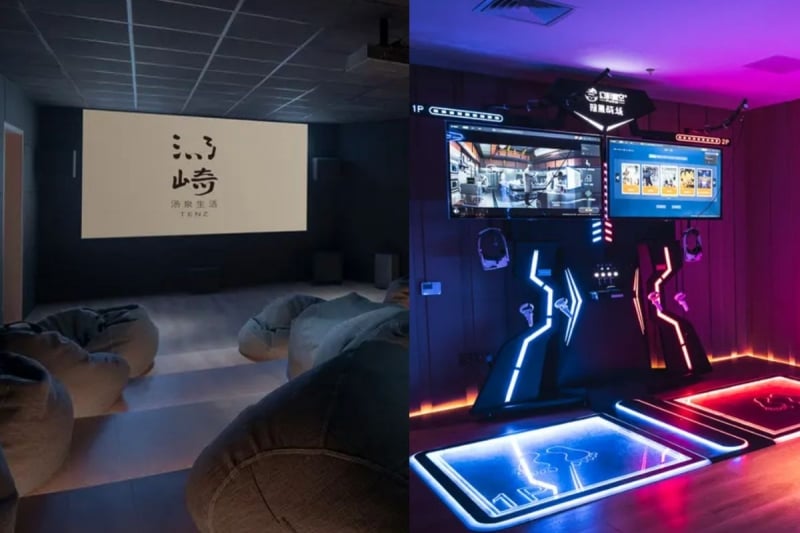
Image Credit: Klook Official Website
For overnight stays, you can choose from beanbags, tatami mats, or massage chairs. Depending on where you choose to rest, it may not be the quietest place to sleep, but the spa is clean, well-maintained, and more comfortable than many budget hotels.
If you are coming from Hong Kong, remember that the border closes around 11 pm. Some facilities also shut for cleaning around midnight, so it helps to time your visit.
3. Order food on a high-speed train and pick it up at the next stop
One of the most unexpectedly fun experiences in China is ordering takeaway on a high-speed train and getting it delivered right to your seat. Using the official 12306 railway app, you can browse menus from nearby cities and book a meal in advance. Options include everything from Lanzhou beef noodles to KFC, along with regional dishes like cold skin noodles or pork bento sets.
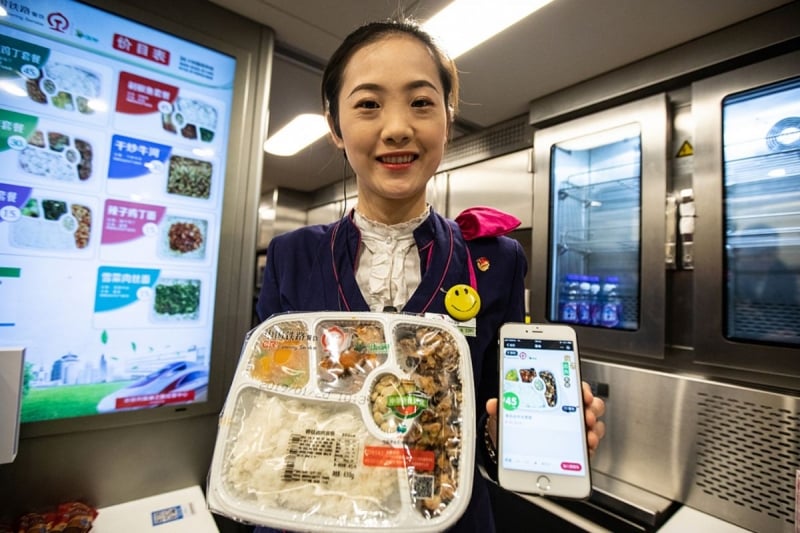
Image Credit: International Services China Official Website
You place your order about one to two hours before your train reaches a participating station. When the train arrives, a delivery rider boards with your meal and hands it to the staff, who pass it to you. The process is smooth and surprisingly quick.
This service is available in over 25 major stations, including Shanghai, Nanjing, Chengdu, and Guangzhou. You will need a local SIM card or help from a friend, since the app is in Chinese and requires a local ID or phone number.
There is something joyful about watching your food arrive mid-journey. Just check the schedule ahead of time and place your order early. Delivery fees are about 8 yuan (S$1.43), with a small markup for the food, but the experience makes it worthwhile.
Also read: What Apps to Download Before Travelling to China
4. Walk through one of China’s “ghost cities”
In some parts of China, entire cities have been built before residents arrive. These places have wide boulevards, new apartments, and public buildings, but few people live in them. Known as “ghost cities,” they offer a glimpse into China’s urban future as one that sometimes arrives faster than people can move in.
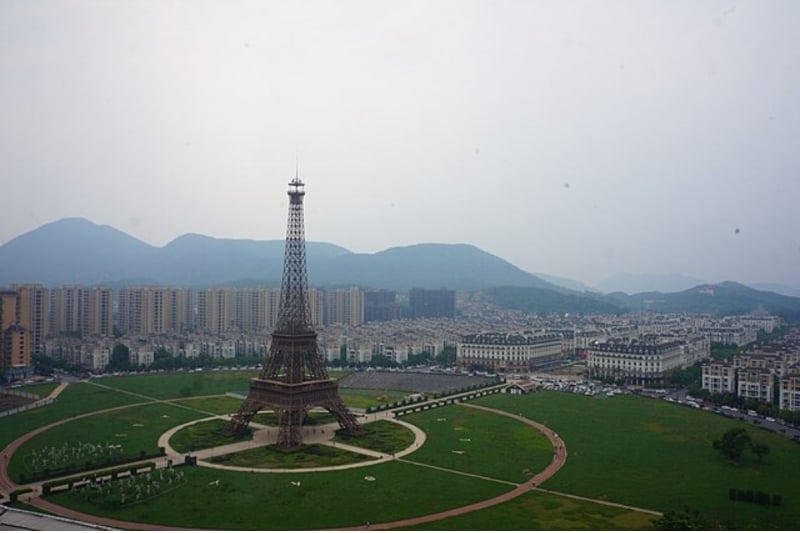
Image Credit: MNXANL via Wikimedia Commons
One well-known example is Tianducheng in Zhejiang, just outside Hangzhou. Built in 2007, it mimics Paris, complete with a 100-metre Eiffel Tower replica and European-style architecture. For years, it remained mostly empty. Developers hoped to attract buyers quickly, but demand took longer to grow. Although more people live there now, and schools have opened, it still feels quiet for a place built for tens of thousands.
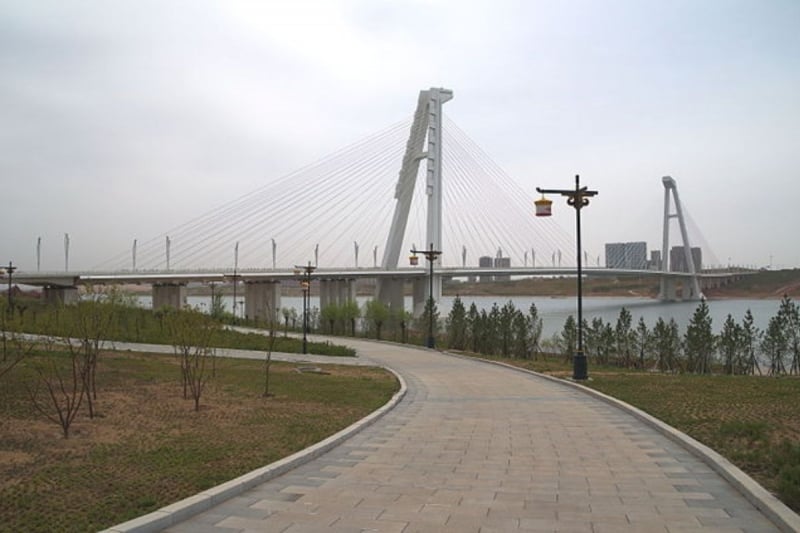
Image Credit: Popolon via Wikimedia Commons
Another is Kangbashi in Ordos, Inner Mongolia. Originally planned for over a million people, the district features grand museums, libraries, and stadiums. For a long time, it had more buildings than people. In recent years, the population has grown, and some areas have come to life. Still, the city feels oversized and strangely liminal.
Walking through these cities feels like being on a movie set. There is beauty in the stillness, but also a feeling of waiting.
5. Experience the Torch Festival in a Yi minority village
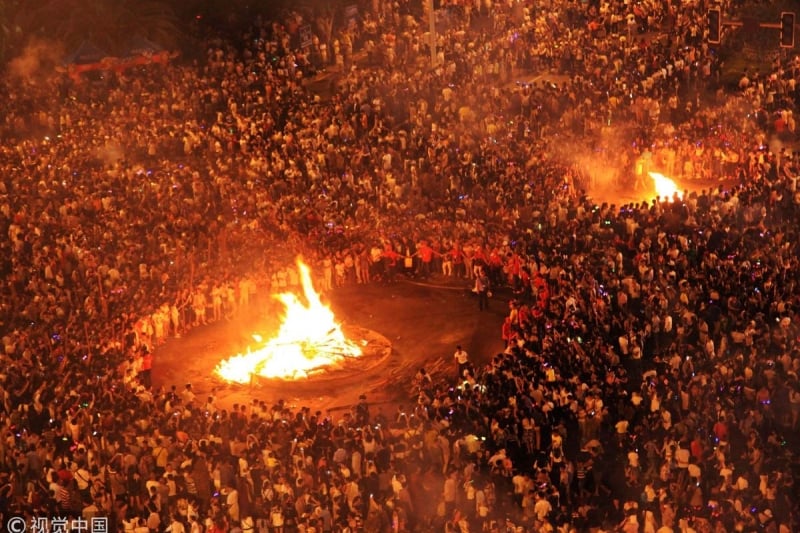
Image Credit: CGTN Official Website
In the highlands of Sichuan and Yunnan, the Yi people mark their summers with the Torch Festival. It’s a celebration of harvest, fire, and community. Held on the 24th or 25th day of the sixth month of the Yi calendar (which usually corresponds to either July or August), the festival dates back centuries and continues to bring people together through light and ritual.
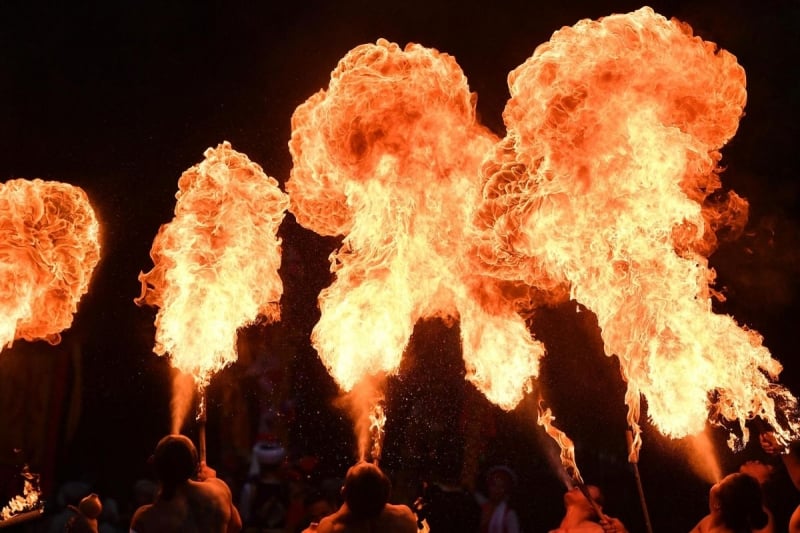
Image Credit: CGTN Official Website
At night, villagers light long pinewood torches and walk in procession. The flames are believed to protect the village and bring a good harvest. Watching the fire flicker across a dark hillside feels both timeless and deeply local.
In places like Xichang or Liangshan, the festival includes singing, wrestling, horse racing, and performances of traditional Yi music. Some villages welcome visitors with food stalls and dance performances. You might hear songs in the Yi language and see children running around with soot-streaked faces.
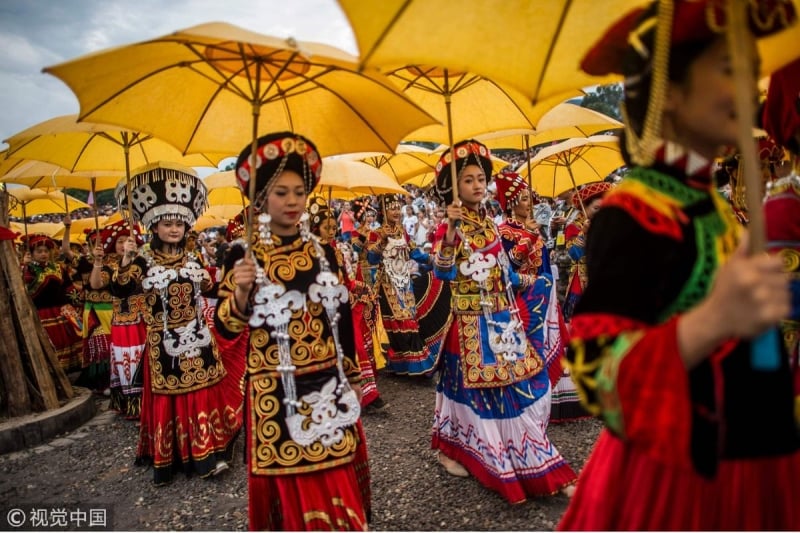
Image Credit: CGTN Official Website
Although tourism has added modern touches, it is not meant to be a spectacle or performance for tourists. Many villages still hold onto the original spirit of the festival, and it remains an important part of Yi culture.
Also read: 7D6N Yunnan Itinerary: Lijiang, Shangri-La, Lugu Lake & More For a Nature Escapade In China
6. Take a Soviet-era cable car across the Yangtze River in Chongqing
In Chongqing, a city of cliffs and rivers, people have long relied on cable cars to get around. The Yangtze River Cableway, first opened in 1987, remains one of the city’s most iconic transport lines. It stretches 1,166 metres across the river and connects two major districts.
The ride takes just four minutes, but the view stays with you. You stand shoulder to shoulder with commuters and tourists, gliding past office towers and boats below. The cabin windows offer a full view of the city’s steep landscape and misty skyline.
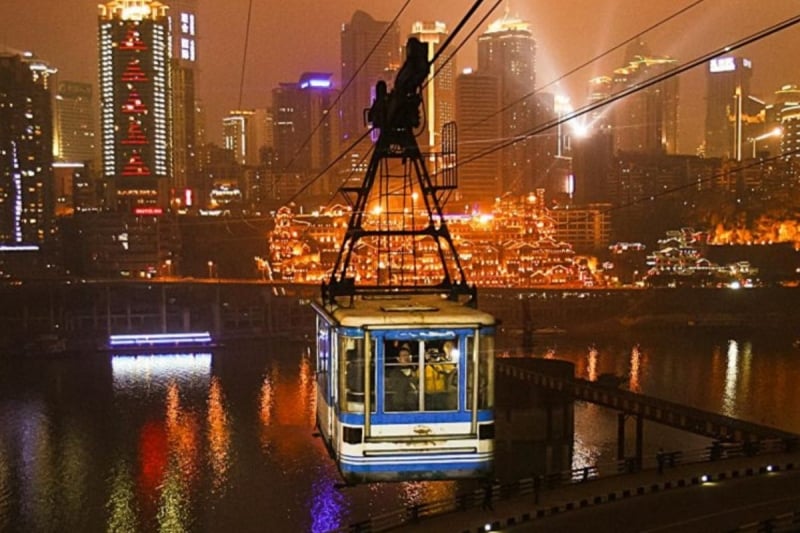
Image Credit: iChongqing Official Website
It is not fancy, and the queue can be long during peak hours. But it offers a way to move through the city that locals have used for decades. A round-trip ticket costs about 20 yuan (S$3.57), and you can pay using a metro card or at the ticket booth.
If you can, try to go in the late afternoon. The light is softer, and the view is clearer.
7. Visit the rainbow-coloured mountains of Zhangye Danxia
In a quiet corner of Gansu, the Zhangye Danxia Landform Geological Park stretches across the landscape in waves of red, orange, and gold. These colours come from layers of sandstone and minerals that have settled and shifted over millions of years. At sunrise or sunset, the hills seem to glow.

Image Credit: NGCHIYUI via Canva Pro
The park has several viewing platforms, and shuttle buses make it easy to move between them. Most of the walks are short and easy, although they can get crowded during holidays. The best times to visit are early morning or evening, when the colours are more vivid and the temperature is cooler.
Zhangye city is about an hour away by car and has its train station and airport. Tickets to the park cost around 75 yuan (S$13.40), with extra fees for transport inside the park.
Also read: 8 Most Beautiful Beginner-Friendly Hikes in China You Can Actually Do
Final thoughts
There are many ways to travel, and just as many reasons for doing it. Some people seek out nature, others go for food, art, history, or just a change of pace. Sometimes we want to be moved. Sometimes we just want something different from what we already know.
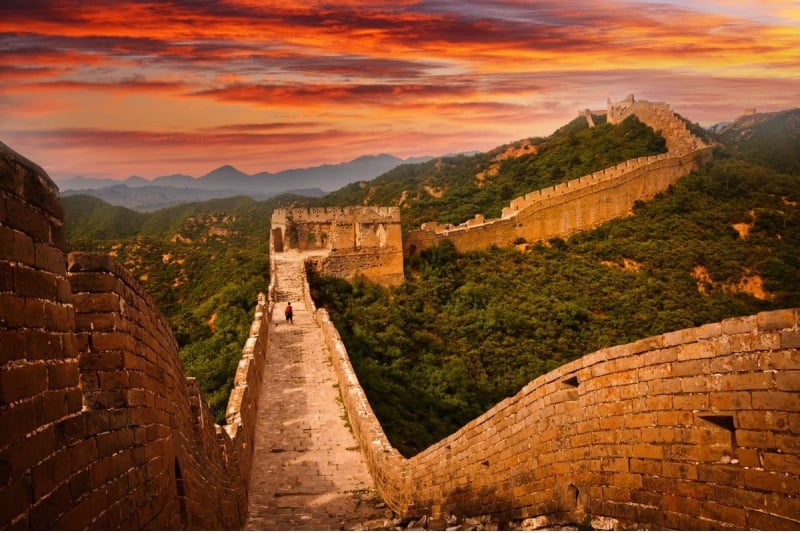
Image Credit: bjdlzx via Canva Pro
This list isn’t tied to one theme or type of experience, just as travel doesn’t always follow a straight line. The things that stay with us aren’t always the ones we planned for. A quiet street can leave a stronger impression than a scenic lookout. A bowl of noodles on a train can feel just as memorable as a monument.
In a country as layered and fast-moving as China, there’s space for all kinds of encounters — the odd, the restful, the striking, the subtle. Hopefully, this list offered a few ideas, or at least a reminder that there isn’t just one way to see a place.




